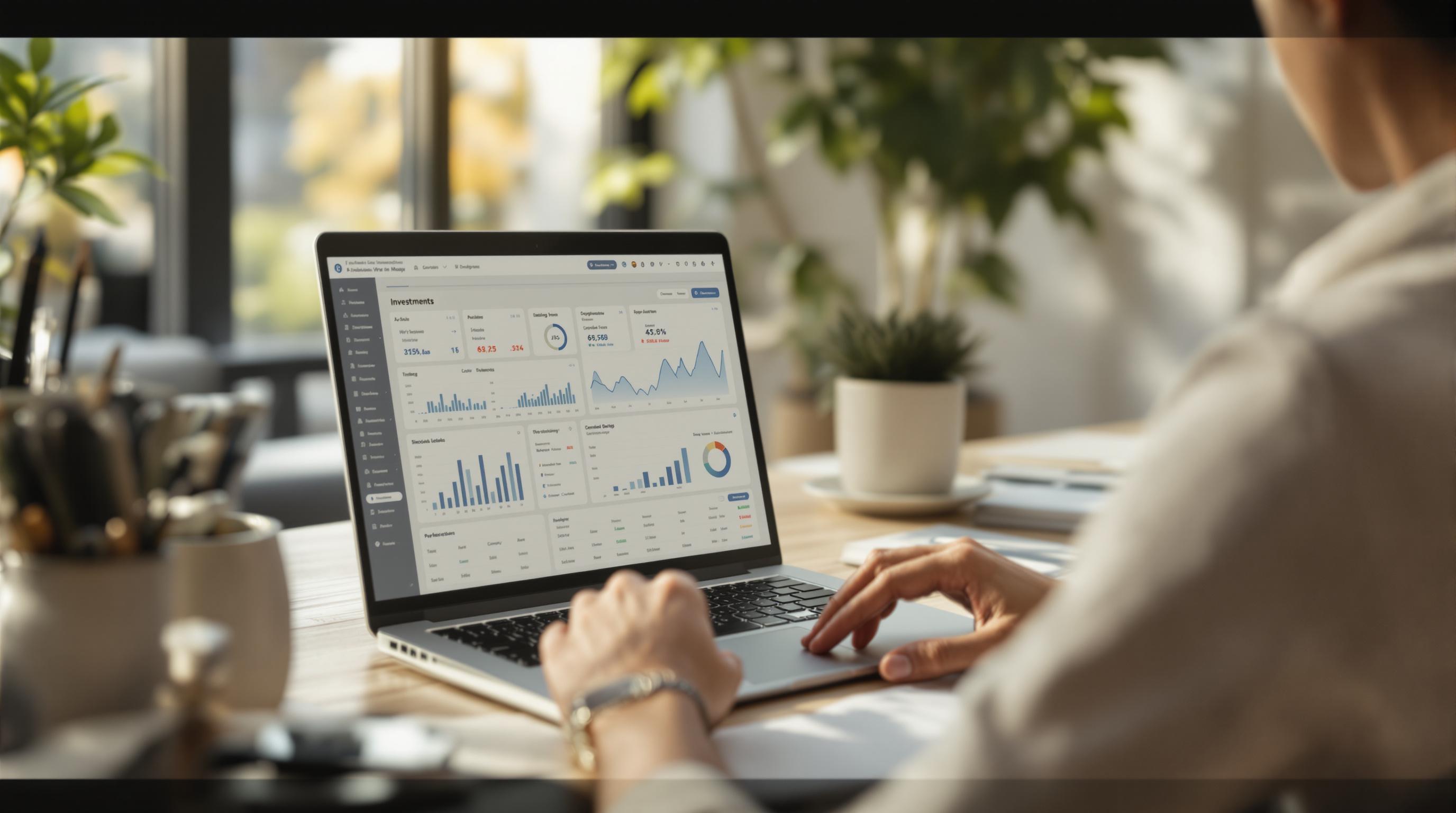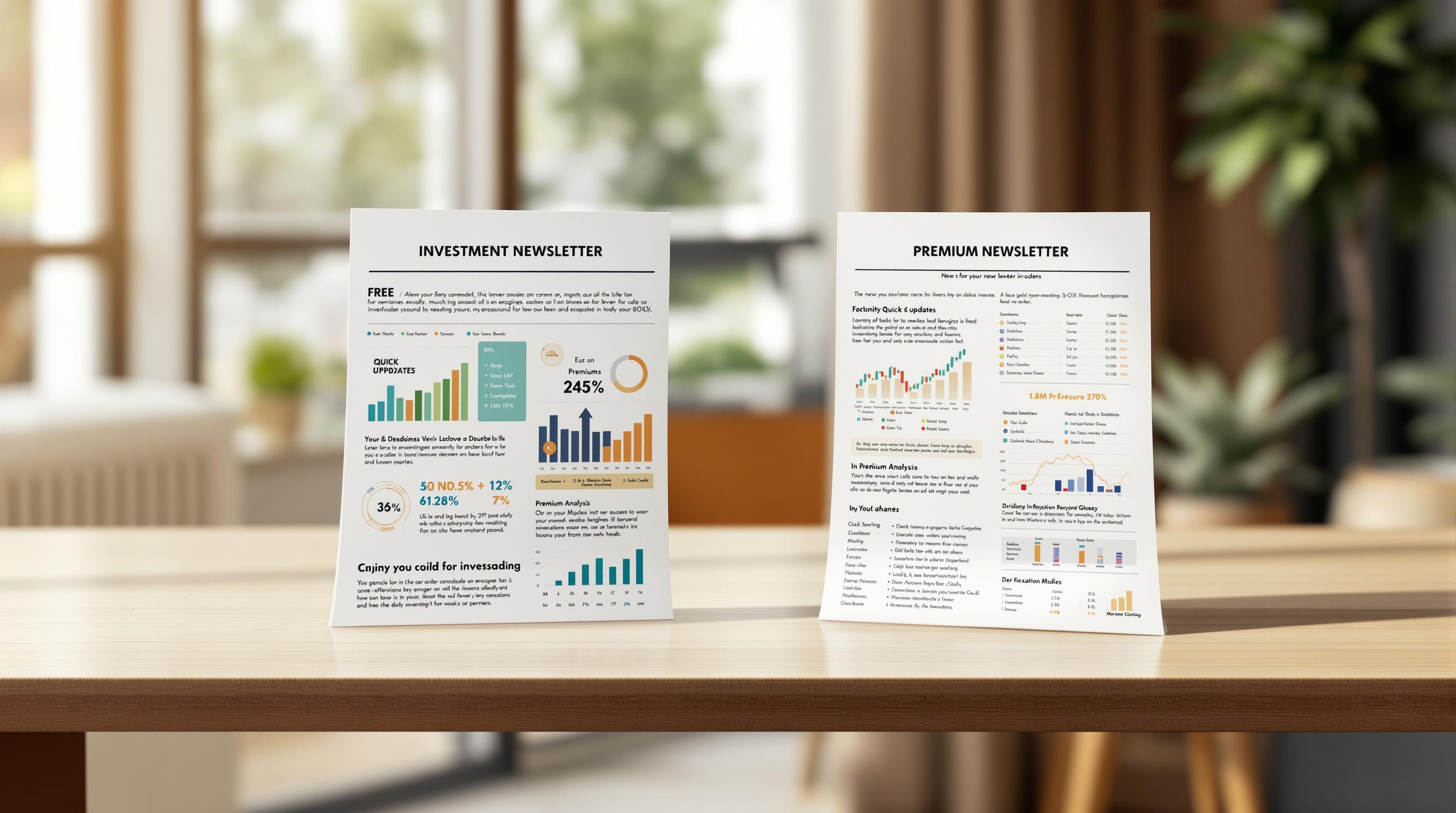- Define Your Goals: Use the SMART framework to set clear financial objectives (e.g., retirement planning or income generation).
- Know Your Risk Tolerance: Assess both your comfort with risk and your financial ability to handle losses.
- Choose Investment Types: Match services to your style - long-term growth, income generation, active trading, or value investing.
- Key Features to Look For:
- Market Data: Stock screeners, financial data, and visualization tools.
- Trade Signals: Expert strategies, quantitative scans, and AI-powered alerts.
- Portfolio Tools: Risk assessment, diversification analysis, and benchmark comparisons.
- Compare Options: Review service history, user features, and costs:
- Motley Fool Stock Advisor: $99/year
- Seeking Alpha Premium: $189/year
- Zacks Premium: $249/year
- Alpha Picks: $449/year
- Test Before You Commit: Use free trials to explore tools and evaluate performance.
Quick Comparison
| Service | Cost/Year | Key Features | Trial Period |
|---|---|---|---|
| Motley Fool Stock Advisor | $99 | Stock recommendations, long-term focus | No trial |
| Seeking Alpha Premium | $189 | Quantitative ratings, in-depth analysis | No trial |
| Zacks Premium | $249 | #1 Rank List, stock screening tools | 30 days |
| Alpha Picks | $449 | AI tools, advanced trade signals | No trial |
Pro Tip: Start with trial periods where available, and focus on services that align with your investment goals and risk tolerance.
Know Your Investment Needs
Set Clear Money Goals
Start by defining clear financial goals to guide your research. Use the SMART framework: Specific, Measurable, Achievable, Relevant, Time-based.
Here are some key milestones to consider:
- Retirement Planning: According to Fidelity Investments, aim to save at least 1x your salary by age 30, 3x by age 40, 7x by age 55, and 10x by age 67.
- Living Expenses: Housing typically accounts for 31–36% of retirement costs. Healthcare expenses, meanwhile, start at 7% of costs around age 45 and increase to about 15.5% by age 75.
Once you've set your goals, evaluate your risk tolerance to better align with the right research tools.
Assess Your Risk Level
Understanding your risk tolerance means looking at both your comfort with risk and your financial ability to handle it.
"People tend to focus just on their comfort level with risk. But your ability to take risks based on your financial situation is just as important." – Nevenka Vrdoljak, senior quantitative analyst, Chief Investment Office, Merrill and Bank of America Private Bank
Consider these factors when assessing your risk:
- How comfortable you are with market ups and downs
- How you'd handle potential losses
- Your previous investment experience
- Stability of your income
- Availability of emergency savings
- How long you plan to invest
- Which financial goals matter most to you
"When you invest, risk is the effect of uncertainty on progress toward your goals... Generally, the higher the risk, the greater your rewards - or losses - could be." – Anil Suri, portfolio construction and investment analytics executive, Chief Investment Office, Merrill and Bank of America Private Bank
Pick Your Investment Types
Your investment choices should align with your goals and risk tolerance. Different research services specialize in analyzing specific types of investments:
| Investment Style | Typical Focus | Ideal For |
|---|---|---|
| Long-Term Growth | Individual stocks, ETFs | Building wealth over 5+ years |
| Income Generation | Dividend stocks, bonds | Generating regular cash flow |
| Active Trading | Technical analysis, market indicators | Short-term opportunities |
| Value Investing | Fundamental analysis, company research | Finding undervalued assets |
Seeking Alpha vs Zacks - Who is The King of Stock Research?
Must-Have Research Features
Once you've outlined your investment goals, it's time to evaluate the research features that can help you make informed decisions. These features should align with your financial objectives and risk tolerance.
Market Data and Tools
A good research service should provide detailed market data and tools for analysis. Here are some key features to look out for:
- Stock Screening: Advanced filters to help you pinpoint investments that match your criteria.
- Financial Data: Access to company financials, economic indicators, and global market trends.
- Visualization Tools: Charts and graphs that simplify complex data.
- Economic Calendars: Tools to keep track of key market events and announcements.
These tools are essential for building a well-informed investment strategy.
"In investing, what is comfortable is rarely profitable." - Robert Arnott
For instance, platforms like Koyfin offer both historical data and predictive analysis to assist investors.
Trade Signal Systems
Trade signal systems are designed to spot opportunities and manage risks effectively. Many modern systems combine expert insights, data-driven scans, and AI technology to boost accuracy.
| Signal Type | Purpose | Best For |
|---|---|---|
| Expert Strategies | Insights from professional traders | Experienced investors |
| Quantitative Scans | Identifying opportunities using data | Technical traders |
| AI-Powered Alerts | Automated pattern detection | Active traders |
The results speak for themselves. For example, Trader's Edge achieved a 118.8% return since July 2024, compared to the S&P 500's modest 1.1% gain during the same period.
Next, consider how portfolio tools can enhance these signals by offering performance tracking and risk management features.
Portfolio Tools
Portfolio tools help you monitor and adjust your investments. Look for features like:
- Risk Assessment: Tools that evaluate your portfolio's risk and suggest adjustments.
- Benchmark Comparison: Track your returns against market benchmarks.
- Diversification Analysis: Tools that monitor your asset allocation and sector exposure.
Platforms like Empower (formerly Personal Capital) provide portfolio analysis tools to 3.3 million users. Services like Morningstar Investor ($199/year for new members) offer similar tools alongside educational resources and expert advice. These tools can be game-changers for keeping your investments on track.
sbb-itb-2e26d5a
Compare Research Options
Once you've identified the features you need, it's time to evaluate specific research services. Here are some important factors to consider when making your decision.
Check Service History
A service's history can tell you a lot about its reliability. For example, Motley Fool Stock Advisor has achieved an average return of +815.36% since it started, far surpassing the S&P 500's +161.67% over the same period.
"In this business, if you're good, you're right six times out of ten." – Peter Lynch
When assessing a platform's credibility, focus on these aspects:
- Transparency in reporting performance
- Consistency of returns through different market conditions
- Quality of the research approach
- Longevity in the industry
Test User Features
Many investment research platforms offer tools and features designed to fit different investing styles. As you evaluate options, pay attention to these key areas:
| Feature Category | What to Look For | Why It Matters |
|---|---|---|
| Data Access | Real-time market feeds | Helps you make timely decisions |
| Customization | Personalized watchlists | Simplifies portfolio management |
| Analysis Tools | Custom screening formulas | Identifies investment opportunities |
| Alerts | Mobile notifications | Keeps you updated on the go |
Some platforms also offer tiered pricing plans. You can often start with free basic features and upgrade to advanced tools for a monthly fee. Be sure to weigh how these pricing structures align with the value they provide.
Review Costs
Pricing varies across top research services, and understanding these costs is crucial. Here's a quick comparison of some popular options:
- Motley Fool Stock Advisor: $99/year (50% off the regular price)
- Seeking Alpha Premium: $189/year ($50 discount)
- Zacks Premium: $249/year, includes a 30-day trial
- Alpha Picks: $449/year (10% discount for new members)
Zacks Premium, for instance, offers a #1 Rank List that has historically doubled the S&P 500's returns. While it costs more, the performance may justify the price.
When reviewing costs, keep these points in mind:
- Compare annual expenses to the features provided
- Look for discounts for new members
- Account for any additional tools you might need to purchase separately
Try Before You Buy
Once you've compared features and costs, it's time to test the service to see if it aligns with your investment approach. Testing and gathering feedback are key steps to make sure you're making the right choice.
Use Trial Periods
Trial periods are perfect for getting a feel for a platform's features and seeing how well they match your needs. For instance, Zacks Premium provides a 30-day free trial, letting you explore tools like style scores and more.
Here’s a simple way to structure your trial period:
- Days 1-3: Check how easy the platform is to navigate, how user-friendly the interface is, and whether the mobile app meets your expectations. Also, test data accessibility.
- Days 4-10: Dive into the main features, such as stock screeners, real-time alerts, and portfolio tools.
- Days 11-20: Assess the depth of analysis, the accuracy of recommendations, and how quickly data updates.
- Days 21-30: Try out advanced tools like custom formulas, backtesting options, and risk assessment features.
Key features to explore during the trial:
- Real-time data feeds
- Portfolio management options
- Screening tools
- Educational resources for investors
Read User Feedback
Before committing, take the time to read reviews from other subscribers. Look for insights on:
- Long-term performance: How reliable are the platform's recommendations over time?
- Customer support: Is the support team responsive and helpful?
- Platform reliability: Does the platform run smoothly without frequent technical issues?
- Value for money: Do the features justify the cost?
For example, users of Seeking Alpha Premium ($189/year) often praise its proprietary quantitative ratings and in-depth analysis. These features are frequently noted as helpful for making better-informed investment decisions. Feedback like this can provide valuable insight as you finalize your choice.
Conclusion
Evaluating your needs alongside the features of a research service is critical to aligning your investments with your financial goals. As Todd Lincoln, MBA, puts it: "Choosing the right stock picking service can significantly impact your investment success in 2025... the right stock picking service not only provides valuable stock recommendations but also equips you with the knowledge to make informed investment decisions."
Choose a service that fits your investment style. For value investing, look for detailed fundamental data. For active trading, prioritize real-time data and advanced charting tools. Robert Arnott's advice rings true: "In investing, what is comfortable is rarely profitable." This highlights the importance of finding a service that not only matches your strategy but also pushes you to grow while staying within your risk tolerance.
When finalizing your decision, focus on these three key points:
- Service Alignment: Ensure the service’s features and analysis methods suit your investment approach.
- Practical Testing: Take advantage of trial periods to evaluate the tools, data accuracy, and ease of use.
- Value Assessment: Weigh the service cost against the potential benefits it offers in improving your decisions.



